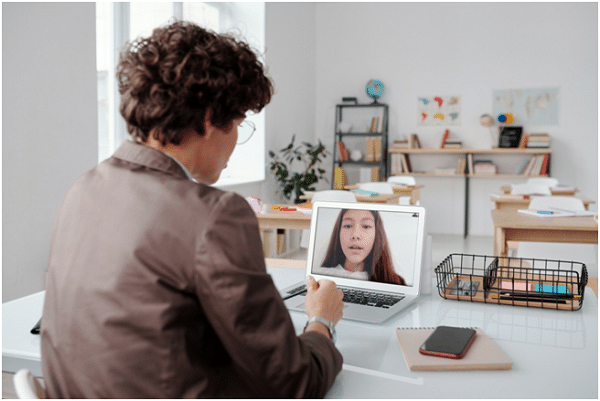
Unlike the face-to-face class mode, the distance model of learning relies solely on online education. Students work remotely and receive instructions and homework through online platforms. Educators act as facilitators and give students the option to register and engage in online messaging if they need additional help. This model works well for students with chronic conditions, students who need flexibility for other obligations, or students who want to progress much faster than what would be possible in a traditional school environment. Even though technology and online learning settings open up new ways to engage students and take charge of their academic progress, the teachers still hold the key to success. Before setting up a blended learning education model, you must aptly plan your class goals, homework, and accomplishments so that the students are aligned with overall learning goals.
Creative Discussion Board: In a traditional classroom, generally, only a few select students participate in the discussion. But on an online-based study platform, a teacher should aim for active participation from most if not all of the students. Class size and student ratio help determine how to organize discussions should take place.
- In a larger class of, say, 90 students, you might want to form smaller focus groups of 10 people so that the students can get to know their classmates. You can also create even smaller groups (6 – 8 people) for more intimate interaction and rotate these groups to expand interaction. This approach also works with smaller classes.
- One technique that promotes a richer dialogue is creating open talking points. Ask the students to interpret a concept from a variety of perspectives. You can also organize student-led discussion opportunities where students lead the following dialogue. The goal is to create a differentiated instruction method that caters to each student based on their particular learning requirements.
Writing Study-Journal: When students actively take down notes after class, they get a chance to reflect on the lessons taught. A journal can be a meditative tool for students because it lets them reflect on their learning experiences and process new information. If possible, at the end of the lesson, allow students to write a note in the journal:
- Summarizing the key points they learned.
- Attempting to answer or make sense of persistent questions.
- Explaining how they can implement the lessons in real-life scenarios.
- Illustrating new concepts, which may be particularly useful for data-centric math lessons.
Empower Students: Once the objectives are set, the students will have a precise idea of their expectations, milestones they need to meet to reach them, and where to focus their time and energy. As students have already set goals and have something to achieve, they are now forced to take a more active role in their learning experience. A teacher must promote a learning environment that lets students have greater responsibility and ownership of their work to help motivate and provide a sense of accomplishment when goals are met.